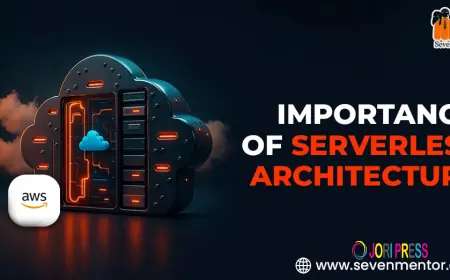Securing Your Open Source Solution: Best Practices for Developers
Learn how to secure your open source solution with these practical tips. From audits to updates, protect your code and users with confidence.

Why Security in Open Source Matters
Open source is everywhere. From small apps to enterprise software, developers around the world rely on it daily. It’s flexible, cost-effective, and community-driven. But there’s one big concern—security.
An open source solution gives you access to the code. That’s a huge benefit. But it also means attackers can study that same code for vulnerabilities. That’s why securing your solution is critical.
The good news? You can reduce risks with the right steps. Let’s dive into how developers can secure open source software without adding extra burden.
Understand the Risks of Open Source
Common Threats You Might Overlook
Using an open source solution doesn’t mean it’s risk-free. Many developers assume popular projects are always secure. But that’s not always true. Even well-known libraries can have bugs, backdoors, or outdated components.
Some common risks include:
-
Outdated dependencies
-
Poorly maintained projects
-
Malicious packages
-
Lack of code reviews
These issues can lead to major security breaches if not addressed.
The Shared Responsibility
When you use an open source solution, you share responsibility with its community. The maintainers may fix bugs. But it’s up to you to update, audit, and test regularly. Ignoring this can expose your entire project to risk.
So stay proactive. Treat open source like your own internal codebase.
Keep Dependencies Updated
Regular Updates Are Crucial
Old libraries are a hacker’s dream. They often contain known vulnerabilities. That’s why regular updates are your first line of defense.
Use tools like:
-
Dependabot (GitHub)
-
Renovate
-
Snyk
These tools scan your dependencies and alert you to issues. Many can even submit pull requests to fix them.
Use Trusted Sources Only
Always install libraries from official repositories. Avoid unknown forks or files from third-party sites. Check the number of downloads, update frequency, and community reviews before adding any package.
If something feels off, skip it. Security starts with smart choices.
Audit Your Code and Dependencies
Static and Dynamic Analysis
Run static analysis tools like ESLint, SonarQube, or Bandit. These scan your code for bad practices, weak patterns, or exposed secrets.
For deeper inspection, use dynamic analysis. Tools like OWASP ZAP simulate attacks on your live app to spot vulnerabilities.
Combining both gives a full security picture.
Perform Dependency Audits
Use package audit tools:
-
npm audit
-
pip-audit
-
composer audit
These check for known issues in your open source solution’s dependencies. Make it a habit to run these during builds or weekly code reviews.
Apply the Principle of Least Privilege
Don’t Give More Access Than Needed
Limit the permissions your application and dependencies have. This applies to:
-
API tokens
-
User roles
-
Filesystem access
-
Network calls
For example, if a library doesn’t need internet access, block it. If a database only stores logs, restrict it to write-only access.
These small actions reduce your attack surface.
Isolate Sensitive Functions
Use containerization (like Docker) or sandboxing to isolate risky parts of your app. If one part gets compromised, the damage stays contained.
This is especially helpful when using untrusted third-party code.
Monitor and Respond to Threats
Logging Is Not Optional
Keep logs of everything. Errors, warnings, and user activity can all provide clues if something goes wrong. Use tools like:
-
Logstash
-
Fluentd
-
ELK stack
Make sure logs are protected and don’t expose sensitive data.
Set Up Real-Time Alerts
Use monitoring tools like:
-
Prometheus
-
Grafana
-
Sentry
These tools help you catch problems in real time. Set alerts for suspicious activity like repeated login failures or unusual API requests.
Quick responses help limit damage.
Contribute Back to the Community
Report Vulnerabilities Responsibly
If you find a security flaw in an open source solution, report it. Most projects have a security policy or email. Use it.
Responsible disclosure builds trust and helps others avoid issues.
Join the Effort
Contribute fixes, open issues, or write documentation. A strong community means faster patches and better practices.
Security isn’t just a solo task—it’s a team sport. By helping others, you also protect yourself.
Educate Your Team
Make Security Part of Development
Train your team on secure coding practices. Add security checks into your code review process. Make them a requirement—not an afterthought.
Include security in every pull request:
-
Are secrets exposed?
-
Are inputs validated?
-
Are dependencies safe?
Use Secure Defaults
Configure your tools and apps to be secure by default. Disable unnecessary services. Use HTTPS. Set strong passwords. Block unneeded ports.
A secure base setup goes a long way in preventing future attacks.
Final Thoughts
An open source solution brings speed and flexibility to your projects. But it also comes with security challenges. The good news? You have the power to manage them.
By staying alert, auditing code, and setting clear processes, you build trust and protect your users. Security doesn’t have to be complex. It just has to be consistent.
Take the first step today. Review your dependencies. Add a scanner. Write better logs. These small actions create a safer ecosystem for everyone.
What's Your Reaction?
 Like
0
Like
0
 Dislike
0
Dislike
0
 Love
0
Love
0
 Funny
0
Funny
0
 Angry
0
Angry
0
 Sad
0
Sad
0
 Wow
0
Wow
0


















































